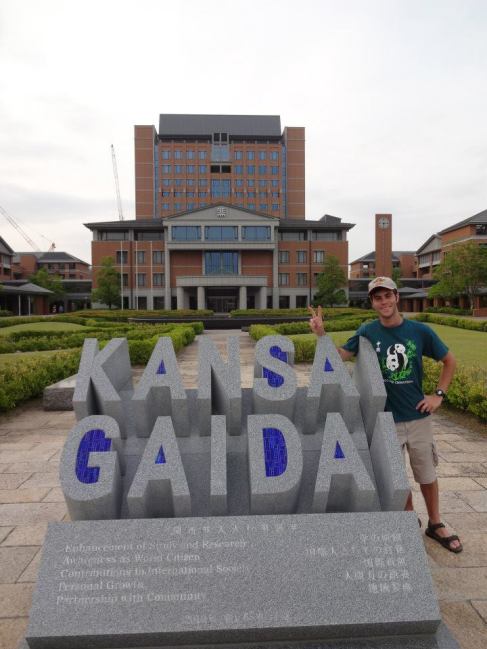Okay, for the record, I initially had no intention of making this thing into a trilogy. It just so happened that I had an opportunity to make it a trilogy, and let’s face it, everything is cooler in threes. So I pulled a Peter Jackson. This would not have been possible had I not gone to Nagasaki.
First of all, Japan has a holiday weekend called Golden Week, many families take time off of work to go on vacations to various parts of Japan. Tokyo, Kyushu, and Okinawa are common destinations. Kyushu is where I went, taking a few totally worth it days of off school to experience what turned out to be my favorite Japanese island. The itinerary included the cities of Fukuoka, Nagasaki, and Kagoshima, as well as the active volcano, Mt. Aso. First off, Mt. Aso decided to be a little temperamental both days I was there. Large volcanic gas emissions prevented a visit to the top of the caldera. The second time we even made it to the ropeway station, before turning right around! Luckily the park was beautiful and my friend and I had some great views and hikes. Fukuoka was more or less just a big city, although it had some great food, a large observation tower, and a Hard Rock Cafe!
Continuing the volcanic theme is Kagoshima, the southernmost major city on the main islands. Sakurajima–also active and constantly smoking–literally rises over the entire bay. Sakurajima was thrilling to explore, I was able to take a tour bus around the peninsula. Apparently it has had four major eruptions in recorded history, and luckily it didn’t erupt while I was there! Kagoshima had a very open and almost tropical feel to it, and the people were very nice. Actually in all of Kyushu the people were very kind, with the exception of the one guy who literally stole my bed in a hostel one night, causing me to return casually and wake him up.
If two smoking volcanoes wasn’t enough, my favorite city on the trip was Nagasaki. Like Hiroshima, Nagasaki suffers from being known as an atomic bomb city. But unlike Hiroshima, Nagasaki doesn’t dwell on the past quite so much. Much like Hiroshima, Nagasaki has a Peace Park and Museum. The park is in my opinion better than Hiroshima’s, as it fits the terrain better and overall feels more like a park. But overall, one can forget about Nagasaki’s WWII past because there’s so much else to do! Western and Chinese culture are everywhere here, and I had a great time exploring the famous Western houses of the Glover Garden, situated on a hillside overlooking the harbor. It is because of the city’s amazing setting and international feel that Nagasaki is now my favorite Japanese city.
As written above, the Kyushu people seem extremely nice. We seemed to always get lost, yet convenience store workers were always great at helping us find where we needed to go. The hostels and hotels were all excellent, with incredibly nice rooms and friendly staff. Finally, the transportation between cities was flawless. Just goes to show how easy it is to travel in Japan, even with very basic language skills.
Well, there you have it, that’s my trilogy. Can’t have a much more epic final installment than a bombing and two active volcanoes, can you? They are truly unforgettable fires. Maybe I can score more Oscars than Return of the King?
Random Trivia Questions:
1. The Enola Gay is famous for dropping the Hiroshima bomb. What was the name of the Nagasaki plane?
2. Nagasaki was the second choice city to be bombed on August 9th. Heavy cloud cover caused the primary target to be abandoned and after three circles over the city the plane left and flew to Nagasaki. What was the initial target for that day that ended up barely avoiding disaster?




